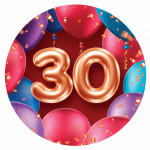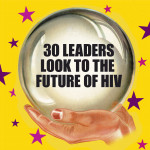A Life or Meth Issue
Ice. Crank. Tina. Junk. Whatever you call crystal methamphetamine—a powerful stimulant made from a toxic mix of over-the-counter ingredients—in July 2002, it was beginning its second decade as the country’s fastest-growing illegal drug. That month’s POZ cover story, “Life vs. Meth,” reported that although crystal had ravaged the Midwest and West Coast,the gay community was just awakening to its pernicious culture of addiction, which had ignited thousands of new cases of HIV.
POZ (and positive) writer Kevin Koffler—a recovering crystal addict—explained its popularity: Affordable, accessible and accommodating (it can be snorted, swallowed, smoked or shot up), it’s also wildly sexually liberating. Koffler vividly evoked how his problems and pressures would slip away, suspending him in utter bliss. But when consciousness vanishes, condoms are sure to follow. The drug allowed both positive and negative men—especially young men, who had missed the terror years of AIDS—to escape, if only for a night, the tyranny of HIV. “All I wanted from life,” Koffler wrote, “was that ‘magical deliverance’ into the ‘sexual trance.’”
Two years after POZ’s report (which won a 2003 National Lesbian and Gay Journalism Award), crystal has tightened its grip on the gay community. Says HIVer Peter Staley, a former addict and founder of aidsmeds.com, “It’s a larger problem than most people think. It’s the gay community’s dirty little secret.” In February, USA Today reported that HIV infection rates have risen among gay and bi men in some states for the third consecutive year. Although no hard data yet prove the meth-sex-HIV link, anecdotal evidence abounds. “Several studies indicate that somewhere between 10 and 20 percent of gay men in New York City are using this drug,” says Perry Halkitis, PhD, a professor of psychology at New York University. In fact, the current crisis, combining more meth use with barebacking, condom fatigue and what Halkitis calls “generational gap in knowledge,” has left many preventionistas in despair. Indeed, as Koffler himself acknowledged, he didn’t quit crystal for good until he tested positive for HIV.
Staley has launched a one-man awareness campaign fitting phone booths in New York City’s Chelsea neighborhood with posters reading “Huge Sale! Buy Crystal, Get HIV Free!” Other encouraging salvos include a packed forum about HIV and crystal at the local gay center, moderated by Tony Award–winning actor Harvey Fierstein, and more Crystal Meth Anonymous groups. “For us to ignore it is self-destructive,” says Staley. “We should be screaming about [its dangers] from the rooftops. The problem’s from within.” But now, at least, it’s been outed.
Woman of the Year: Dawn Averitt
Dawn Averitt is 35 and married and just gave birth to her second daughter. That’s swell, you’re thinking, but hardly electrifying—right? Not quite. Though Averitt may look indistinguishable from many other pretty, overworked supermoms, she’s one of the small but growing group of pioneer women with HIV who, through HAART prenatal therapy, has given birth to an HIV negative child. In “Born Free,” POZ’s December 2002 cover story, Averitt (who tested positive in 1988, at 19) spoke eloquently about how, for many years, she was certain she would never be a mother. However, studies have confirmed what many HIVers have long proposed: that HAART can reduce prenatal HIV-transmission risk to as low as two percent.
Despite the statistics, choosing motherhood wasn’t easy for Averitt. Would she live to see her child grow up? Would her HIV meds harm the baby? What if something went wrong during labor or breast-feeding? But after much research, Averitt and her husband, Brad, decided to go for it—their first child, daughter Madeline, was born in June 2002 and is HIV-free. In August 2003, Averitt, one of the nation’s top treatment activists, gave birth again—to thewellproject.com, an online portal for women living with HIV. And on February 26, just as POZ went to press, Averitt delivered her second daughter—Sophia Alston Bridge, endowed with, Averitt says, “powerful lungs and a head of dark hair!” (All newborns test positive for the HIV virus, so Averitt won’t know baby Sophia’s status definitively for another 18 months.)
Averitt’s cover story attracted mail from “both ends of the spectrum,” she says. “There were people who were incredibly grateful that someone was willing to speak out…. I got overwhelmingly positive responses.” But there were also, she adds, “angry, frustrated letters.” Indeed, when Averitt became pregnant with her second child, even the people who eventually “came around” to her decision to have Madeline had “a lot of trouble,” she told POZ in an interview two weeks before Sophia’s birth. “People don’t really know what to say when I tell them I’m an HIV positive woman with one healthy child and another on the way. But it was absolutely critical to me that my daughter have a sibling. Had there been a reason for me not to have a child, I would have considered other ways. I’ve been very fortunate.”
’02 Personal Best
Fear Factor by Anonymous
Mike was only my third boyfriend since I’d been diagnosed with HIV, in 1996. A rock climber and an extreme mountain biker, he pursued risk—for fun. So he handled my disclosure like someone used to staring down a mountain into a raging river. I thought I might marry him.
Until he showed me a lump near his lymph glands. Though we’d always used condoms, he was desperately afraid the virus had slipped through. During the two-week wait for the test results, he grew colder and more frightened and furious. When I asked, “How are you?” he bellowed, “How do you think I am?” I wanted to answer, “Where’s the guy who laughs in the face of danger?” but instead said nothing. Though I didn’t think I’d given him HIV, the thought of being bound to him through the virus infuriated me—the way a man might feel after impregnating a woman he had no plans of marrying.
Well, he didn’t have HIV—the lump was a fat deposit. Leaving the test center, I ended the relationship. He wasn’t worth the risk. Since then, I’ve found a guy who is. Sure, HIV scares him—but it doesn’t scare him away.
Anonymous has been writing the “In the Closet” column for POZ since 2003.
BUZZwords
Microbicides A longtime dream of activists, these “chemical condoms” for women and gay men whose partners don’t wear condoms entered Phase III trials—and general consciousness—in 2002, thanks in part to a $50 million research bequest from the Gates Foundation. But prevention’s “magic bullet” likely remains a decade away.
Hey! Days
January
The U.N. launches the historic Global Fund, planning a five-year, $50 billion agenda for worldwide AIDS, TB and malaria relief. This seeming victory of public health over politics has (so far) raised…$5.3 billion.
April
College freshman Nikko Briteramos is the first HIVer in South Dakota prosecuted for not disclosing his status to sexual partners. Originally sentenced to five years’ probation, he is currently serving four years for parole violation.
May
The curious trio of Bono, comedian Chris Tucker and Treasury Secretary Paul O’Neill embark upon what Time dubs “a celebrity road show” through AIDS-ravaged Africa. It focuses the media on Africa and sparks discussion of global AIDS.
July 3
To right-wing horror, Bush fills the long-vacant CDC-head seat with San Francisco AIDS doc Julie Gerberding, MD. But she toes the party line, saying, “Abstinence and monogamy are the first line of defense against HIV.”
October
Stop AIDS Project papers San Francisco with its controversial “HIV Is No Picnic” prevention posters, depicting HIVers suffering HAART nasties like diarrhea and lipo.






Comments
Comments